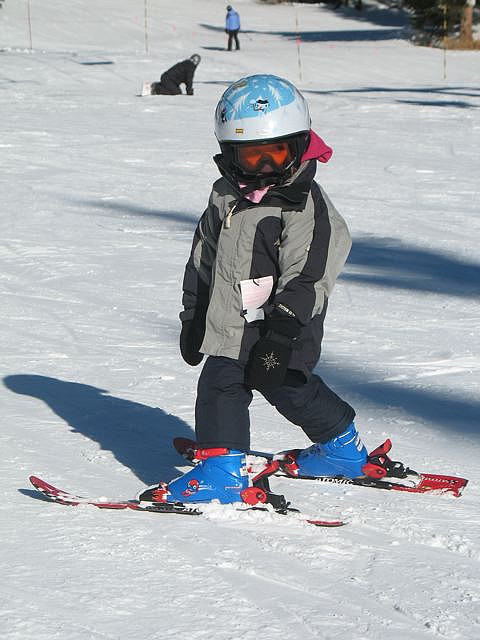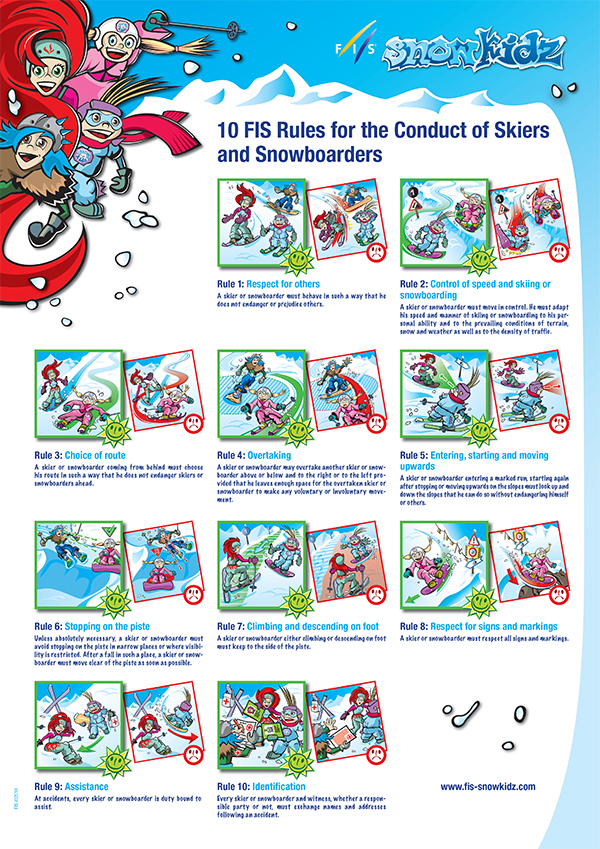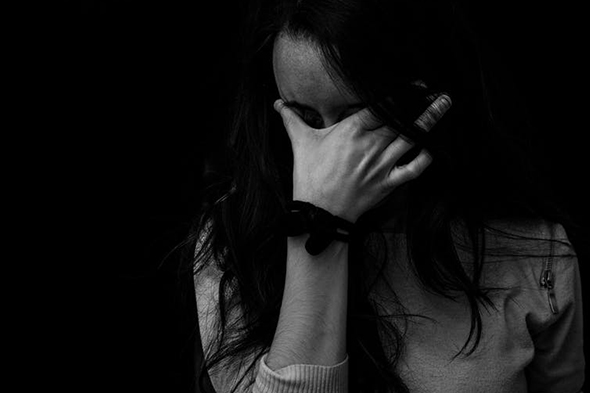by Jason Velázquez
A few years ago, when I told my buddy Mike that my eight-year-old daughter and six-year-old son would be taking skiing lessons through their school next week, he reminded me that his own daughter had been skiing since she was three.
When Mike and I were talking about skiing —before my kids had shown any real interest in the sport — he had encouraged me to take them to the slopes, assuring me that the younger kids learn, the safer they are, and the more naturally they adapt to the sport. Due to shortages of money, time, and trust that my babies would survive the bunny slope, however, somehow the winter slipped by with no skiing for my darling little daredevils.
My own skiing experience is pretty limited, despite having grown up in New England where ski mountains are plentiful. I doubt I’ve clipped a lift pass onto my jacket more than half a dozen times. The last time I spent the day paying for, essentially, assisted gravity, I got over-confident, gained more and more speed, and flew off the trail into the woods, stopping only with the help of a large conifer. Wood is hard. They make baseball bats out of the stuff. And you know what? It’s just as hard when it’s still rooted in the ground, posing as a harmless tree. People do die hitting trees, so it’s no joke, though I was the butt of more than a few for a while. My face stopped bleeding and I regained my breath a mere 20 minutes later.
So when my wife told me that she was signing the kids up for the skiing option as part of the school’s “Winter Enrichment” program, I felt a ripple of panic wash over me (They liked bowling last year; what’s wrong with bowling?). The ripple swelled into a wave when I ran into Mike again, who regaled me the chilling tale of his family’s Christmas Eve ski trip, when he had to ski like lightning to reach his daughter, now six years old, to, basically, knock her over before she crashed into the trees less than six feet away. She survived the trauma just fine and ended up enjoying a few more runs down the mountain. He said his heart didn’t stop pounding against his ribs for the rest of the afternoon.
But the thing is, see, we live in such proximity to a popular alpine ski facility, it would be pretty foolish to let my paranoia about high-speed sports become a permanent obstacle to my kids’ getting the most out of a season that, here in New England, can last nearly six months. Besides, what if their first time skiing doesn’t happen until they’re teenagers? Not only will they be embarrassed to be the only kids who don’t even know how to “snow-plow,” they’ll also run the risk of going down a mountain trail whose difficulty exceeds their ability, either through peer pressure or through pure youthful stupidity.
I swallowed the lump in my throat and did some homework on ski-related childhood injuries. More importantly, I found out what the experts recommend to keep kids safe on the slopes. Here’s what I found out.
However devastating fatal skiing accidents are when they happen, deaths on the slopes are rare and have been in decline during the last decade. The National Ski Area Association reported that there were only 32 deaths during the 2012–13 season. That number works out to 0.57 fatalities for every million ski/snowboard visits nationwide. Similarly, NSAA observes, the United States experiences 33 deaths due to lightning strikes during the same time period, according to the National Oceanic & Atmospheric Administration.
The relative infrequency of fatal skiing accidents, of course, should not lure parents into a false sense of safety. Injuries of varying degrees happen every day during ski season. The Orthopedics Institute at the Children’s Hospital, Colorado (I’m thinking that if anyone knows about kids and skiing accidents, they do) reports that the most common ski injuries include knee, ankle, and thumb sprains. (No texting for a month?! Aaaaaaah!)
Injuries more commonly seen in snowboarding, they note, include the wrist, shoulder, and head. Wrist fractures (broken wrists) commonly happen when the hands and arms are used to brace falls.
Both skiing and snowboarding, says the Orthopedics Institute, come with the risks of:
• Arm and leg fractures (broken bones)
• Concussions, usually caused from falls on ice or collisions with other athletes, trees, or the ground
• Ligamentous knee injuries such as medial collateral ligament (MCL) and anterior cruciate ligament (ACL) tears, with MCL strains being the most common knee injury
• Ankle sprains
• Muscle strains of the lower extremities (legs) and back
According to STOP (Sports Trauma and Overuse Prevention) Sports Injuries, an initiative of the American Orthopaedic Society for Sports Medicine (AOSSM), most of these injuries can be “prevented by proper physical preparation, suitable and properly adjusted equipment, and common sense.” They list some of the most common contributing factors to skiing injuries:
• Time skiing/snowboarding without rest
• Skiing/snowboarding above ability level
• Improper/faulty equipment
• Inadequate adjustment to altitude
• Dehydration/fatigue
• Skiing/snowboarding off trail or in closed areas
• Failure to observe posted warning signs by the mountain responsibility conduct code
So what about helmets? Some states, such as New Jersey, mandate that anyone under the age of 18 is required to wear head protection while skiing. The National Ski Patrol recommends helmets for all skiers, although the American Academy of Orthopaedic Surgeons (AAOS) warns that “studies show that helmets offer considerably less protection for serious head injury to snow riders traveling more than 12–14 mph.” That does not mean that the association recommends against helmets, however.
“In all recent studies,” says the AAOS, “helmeted skiers, who have sustained head injuries, have had better outcomes and had less temporary or permanent neurological loss/impairment than those not wearing the proper protective headgear. There is very little potential risk associated with wearing a helmet. However, should an accident occur, protective head gear could significantly decrease risk of serious injury.”
In the end, no amount of protective equipment will safeguard a young skier who either overestimates his abilities or underestimates her body’s warning signs. Parents have to hope that the common-sense lessons we’ve been trying to impart to our kids since before they could walk sunk in enough to make a difference once the lift drops them off at the start of their dizzying descent. If not, perhaps the International Ski Federation’s 10 Rules for the Conduct of Skiers and Snowboarders can up the difference.
My kids start their downhill adventures this coming Monday. While I feel slightly encouraged after reading, I’ve decided to go as a chaperone so I can be on the slope with them, watching from the sidelines, hoping they just have an exhilarating time and leave the hand-wringing to me
This article originally appeared at SteadyAsTheyGrow.com, December, 2015
The 10 FIS Rules for the Conduct of Skiers and Snowboarders
The Italy-based sport and cultural association, Panathlon International, drafted the first “Decalogue” in 1963 and implemented in about twenty ski resorts. The International Ski Federation (FIS) developed its own version in 1967, which was finalized in 2002.
1. Respect for others
A skier or snowboarder must behave in such a way that he does not endanger or prejudice others.
Skiers and snowboarders are responsible not only for their own
behaviour but also for their defective equipment. This also applies to
those using the newly developed equipment.
2. Control of speed and skiing or snowboarding
A skier or snowboarder must move in control. He must
adapt his speed and manner of skiing or snowboarding to his personal
ability and to the prevailing conditions of terrain, snow and weather as
well as to the density of traffic. Collisions usually happen because
skiers or snowboarders are moving too fast, out of control or have
failed to see others. A skier or snowboarder must be able to stop,
turn and move within the ambit of his own vision. In crowded areas or
in places where visibility is reduced, skiers and snowboarders must move
slowly especially at the edge of a steep slope, at the bottom of a
slope and within areas surrounding ski lifts.
3. Choice of route
A skier or snowboarder coming from behind must choose his route in such a way that he does not endanger skiers or snowboarders ahead.
Skiing and snowboarding are free activity sports, where everyone may
move where and as they please, provided that they abide by these rules
and adapt their skiing and snowboarding to their personal ability and to
the prevailing conditions on the mountain. The skier or snowboarder in front has priority.
The skier or snowboarder moving behind another in the same direction
must keep sufficient distance between himself and the other skier or
snowboarder so as to leave the preceding skier or snowboarder enough
space to make all his movements freely.
4. Overtaking
A skier or snowboarder may overtake another skier or snowboarder
above or below and to the right or to the left provided that he leaves enough space for the overtaken skier or snowboarder to make any voluntary or involuntary movement.
A skier or snowboarder who overtakes another is wholly responsible for
completing that manoeuvre in such a way to cause no difficulty to the
skier or snowboarder being overtaken. This responsibility rests with him
until the overtaking manoeuvre has been completed. This rule applies
even when overtaking a stationary skier or snowboarder.
5. Entering, starting and moving upwards
A skier or snowboarder entering a marked run, starting again after stopping or moving upwards on the slopes must look up and down the slopes
that he can do so without endangering himself or others. Experience
proves that joining a slope or starting again after stopping is the
sources of accidents. It is absolutely essential that a skier or
snowboarder finding himself in this situation enters the slope safely
and without causing an obstruction or danger to himself or others. When
he has started skiing or snowboarding properly again – even slowly – he
has the benefit of rule 3 as against faster skiers and snowboarders
coming from above or behind. The development of carving skis and
snowboards allows their users to carve and turn upwards on the slopes.
Hence they move opposite to the general downhill traffic. They must,
therefore, make sure in time that they can do so without endangering
themselves and others.
6. Stopping on the slope
Unless absolutely necessary, a skier or snowboarder must avoid stopping on the slope in narrow places or where visibility is restricted.
After a fall in such a place, a skier or snowboarder must move and
clear of the slope as soon as possible. Except on wide slopes, stops
must be made at the side of the slope. One must not stop in narrow
places or where it is difficult to be seen from above.
7. Climbing and descending on foot
A skier or snowboarder either climbing or descending on foot must keep to the side of the slope.
Moving against the general direction poses unexpected obstacles for the
skiers and snowboarders. Footprints damage the slope and can cause
danger to skiers and snowboarders.
8. Respect for signs and markings
A skier or snowboarder must respect all signs and markings. The
degree of difficulty of a slope is indicated in black, red, blue or
green. A skier or snowboarder is free to choose whichever slope he
wants. The slopes are also marked with other signs showing direction or
giving warnings of danger or closure. A sign closing a slope, like one
denoting danger, must be strictly observed. Skiers and snowboarders should be aware that warning signs are posted in their own interests.
9. Assistance
At accidents, every skier or snowboarder is duty bound to assist. It is a cardinal principle for all sportsmen that they should render assistance following an accident independent of any legal obligation to do so. Immediate First Aid
should be given, the appropriate authorities alerted and the place of
the accident marked to warn other skiers and snowboarders. FIS hopes
that a hit and run offence in skiing and snowboarding will incur a
criminal conviction similar to hit and run an offence on the road and
those equivalent penalties will be imposed by all countries where such
legislation is not already in force.
10. Identification
Every skier or snowboarder and witness, whether a responsible party or not, must exchange names and addresses following an accident.
Witnesses are of great importance in establishing a full and proper
report of an accident and therefore everybody must consider that it is
the duty as a responsible person to provide information as a witness.
Reports of the rescue service and of the police as well as photographs
are of considerable assistance in determining civil and criminal
liability.









This is one of the best ski injury prevention guides I’ve seen. I think I’m going to show it to my bosses and see what they think. I work at an urgent care clinic in Lakewood, CO so we see more than our fair share of ski injuries, especially severe sprains, strains, and hairline fractures. A lot of people get injured, think they’ll heal up on their own, and then when they don’t feel better in a couple days, they show up at our clinic. So of course the best time for this preventiojn guide would be before they come to the clinic.
Thanks so much for letting us know you think it might be useful! I know it SEEMS like some kids are made out of rubber, but there’s no reason to take chances, right? Have a great (injury-free) holiday season!